Afterglow from visit to FW Botanical Garden
I made a quick trip to the Fort Worth Botanical Garden this morning, before it got too hot. For those of you in other parts of the world, it is still very hot here during the days, well over 90F. It was a good visit, here's my observations on the many roses they have growing in their gardens there. These are just my opinions, this and $5 will get you a cup of Starbucks.
BOURBONS:
The most beautiful, and heat tolerant roses in the garden were surprisingly in this class.
Maggie: lots of shapely, well-formed, fully petaled blooms that'll be remembered for a long time. I've seen a lot of photos of this rose, but none of them begin to approach the true beauty of the bloom color on Maggie. You have to see it "in person" to fully appreciate how special this bloom is. Heavily thorned.
Souvenir de la Malmaison: Like a heat-seeking missile. Like Maggie, made for Texas. Very productive here, especially during this time of year. Heavily thorned.
Souvenir de St Annes: The apple didn't fall far from the tree. Just beautiful. Nice foliage, shapely short bush, lots of big semi-double blooms. Heavily thorned.
CHINA'S:
Fortunately, the management of the gardens have the good sense to have included lots of this class in the garden.
Ducher & Spice: Among the very best bush forms of the china roses. Very full, with foliage all the way to the ground, and nicely wider than tall. Beautiful garden plants. Both are very lightly thorned.
Arethusa: Hey, this china is fragrant. Very substantial plant in size and fullness. Nice and unusual bloom color. Loose bloom form, but quite a few petals. Heavily thorned.
Cramoisi Superieur & Louis Philippe: There is no confusing these two. Cramoisi has many more petals, and a more shapely bloom. It is much more beautiful that LP to me. However, the plants themselves & their leaves do look nearly identical. CS looked moderately thorned, LP lightly thorned.
Napolean: Lawdy, this is a big plant in the south. Moderately to lightly thorned.
Caldwell Pink: Looks much more like a china than a polyantha, so I'll include it here. Extremely healthy and productive, with very thick bush growth. Covered in tight pom-pom blooms. Moderately thorned.
Mutabilis: This far south, this rose is at its best grown as a small ornamental tree, slightly limbed up. Grown that way, it has a very graceful, oriental look. To say it's a big plant is an understatement. Awesome looking specimen when viewed from a distance growing among shorter, smaller plants. And blooms are interesting viewed up close as well. One of the most impressive images I saw today. Moderately thorned.
Archduke Charles: The most interesting of the china blooms (except perhaps Cramoisi Superieur). Plant habit is a little zig-zag looking. Airy plant habit. Lightly thorned.
Hermosa: These plants are always too tiny when I visit, and always look like they are trying to get established. I wanted to be blown away by this rose, but I haven't yet. I'll continue to monitor it on future visits.
Old Bush: Interesting to me mostly for its history. I do respect this plant. Lightly thorned.
NOISETTES:
Several of them, but none of them held my attention. Perhaps it is because none of them looked fully established. Blush Noisette looked kind of nice.
TEA ROSES:
Two of this class clearly stood out to me. Madame Antoine Marie & Duchesse de Brabant.
Madame Antoine Marie: Lots of them, and I can see why. Everything that a true tea rose should be. By far the best plant form of all the tea roses ... short, fat, bushy, graceful plants. Perfectly beautiful, rich-looking, unique leaves. Much, much more twiggy than all the other tea roses, more like a china (a very good thing in my opinion). Of the purest, most unblemished bloom color. Lots of blooms. Bloom size is small in this heat and kind of starry on the fully opened blooms, but charming immediately upon opening from nice buds. I can't say enough about how impressed I was with this rose. If you would like to grow a tea rose in a large container, don't even think about which tea you should choose ... this is the one!
Marie Van Houtte: Always the picture of health on every visit to this garden. None were currently in bloom, but nice, large, disease-free plants. Moderately thorned.
Bon Silene: A tree. Huge. Moderately thorned.
Mrs Dudley Cross: What are they feeding these things? I've never seen so much fresh new growth in 90F+ weather. All new growth was beautifully burgundy in coloration. Not many blooms, but the ones that were there were large and more shapely than are currenlty on my own MDC. Extremely healthy foliage on their specimens. No thorns at all.
Monsieur Tillier: Big, thick, healthy. Small, but plentiful blooms of interesting color. Lots of petals, pom-pom shaped. Moderately thorny.
Duchesse de Brabant: Near perfection in a rose. Deserves to be painted by talented artist. The most exquisite blooms of all the teas in the Fort Worth garden. Also the most fragrant. Fruity. Why do they only have one specimen of this jewel? Moderately sprinkled with insignificant looking, small prickles.
Safrano: In my opinion, this tea is not praised enough. Blooms are beautiful in bud and when first opening. Interesting, soft color blend. Fading quickly when open, and maturing quickly to a loose form. Loved it. Lightly thorned.
Isabella Sprunt: Not nearly as captivating to me as the momma plant. I didn't care for this tea.
Adam: He appears to have died or been removed.
Comtesse du Cayla: I'm listing here in the tea roses, because after close inspection, there's no way this is a china rose. The thorns, foliage, and plant habit don't look at all china to me. There were a lot of these at the garden. All of the fully open blooms were fried, even in mid-morning sun. However, the buds and newly opening blooms were things of beauty, with very intriguing color. All specimens looked healthy. A light scattering of very large, thick, un-china-like thorns.
OLD EUROPEAN ROSES:
Always a rare privilege to be able to view up-close one of these roses in a Texas garden.
Ispahon: I must revisit the garden next spring to view the blooms on this rose. Photos I've seen of the blooms are incredible. The plant was doing nicely in the Texas heat. It was upright in growth pattern and looked healthy and rather happy. Not a large specimen ... it may not have been in the garden for very long. Moderately thorny.
Kazanlik: Looked to be doing fine. Not a large plant. Slim build at this point in its life. A fairly thorny little thing.
Autumn Damask: No leaves, just a lot of thorns on long canes. On this day, this was an ugly plant that probably deserved to be moved to another climate.
Madame Plantier: Not much plant there, few leaves, a new specimen. Lightly thorned.
HYBRID PERPETUALS:
Not a great class for Texas, and as such very few in the garden.
Marchessa Boccella: The only HP that has truly thrived over the years in this garden. It's a great plant, with nice blooms. Apparently the most frequent repeat bloomer of all the HPs in Texas. It has been in bloom no matter when I have visited this garden. Maybe it's really a Portland? Very thorny.
SPECIES ROSES:
A delight to see first hand.
Fortuniana: Lawdy. The biggest plant I've ever seen. Downright scared as I walked under it. Very few thorns.
Chestnut rose: Didn't quite know what to think of this one. I think moderately thorny, although it didn't hold my attention long enough to really remember.
Swamp Rose: How cool is this one! Very interesting. Architectural growth habit. I'd love to have the room to grow this one, in a kind of out of the way place. I want to return in the spring to see it in bloom. Must be fantastic at that time of year, because I loved it even now. Leaves like a willow tree! No thorns seen on its canes, also could not feel any prickles under its leaf mid-ribs.
HYBRID MUSKS: Although not technically a true OGR class, they definitely qualify as "antique" due to their age. And they belong in any garden of those who love old roses.
Bishop Darlington: There were several of these. Unlike the other HM's, they were really upright and tall. Loose, almost single blooms. I didn't care for this rose. Very thorny.
Kathleen: A lot of this one too. The single blooms were much more appealing to me that the previously mentioned rose. More lateral growth too on the plant. Kind of nice. Very thorny.
Lavender Lassie: A really big plant. Unfortunately, no blooms today. Moderately thorny.
Prosperity?: I think this is the HM that they had tons of. Very spreading growth habit. Was just okay to me. Took up lots of real estate with its extremely thorny canes.
Nur Mahal: Loved it, loved it, loved it. One of the very first roses I check on every time I visit this garden. Not a large plant, yet has graceful, arching canes. I can no longer go without this one. Beautiful and unique foliage. I am going to place an order today with The Antique Rose Emporium for delivery in March. This rose is mine. No visible thorns on any canes of their specimens, and better yet ... absolutely no small prickles underneath the leaf mid-ribs either.
POLYANTAS:
I'm not a huge fan of this class, but many of them are certainly well-adapted here, and prove it in this garden.
Perle d'Or: Several of them in this garden, and they are all healthy and productive. The most impressive to me of the polyanthas. Nice, moderate sized plant (not small but not huge). Charming, special blooms, none other just like it. Unique color. Good fragrance. A light scattering of very large thorns.
Marie Pavie: Looked fine. Not as big of a fan as I used to be, but nice plant.
Clotilde Soupert: Not in bloom. Been there, done that, with this plant.
MODERNS:
About half of their large rose collection is in modern roses.
Knockout: Far too many of them. The only ones that were notable were the Rainbow Knockouts, which were not uninteresting.
David Austin English roses: They have all been removed from the garden. Hmmm ... what does that tell me about their long-term durability in our harsh climate? Nonetheless, I would be willing to baby my 'Heritage' for all of eternity if necessary (so far that hasn't been necessary to do so in my own garden).
Buck Roses: Geez, they've put in a lot of them lately. I didn't get too enthusiastic though, except for Awakening and Distant Drums. The attraction to Awakening may be because its blooms somewhat reminded me of SdlM's blooms. I'd have Distant Drums if it weren't so viciously thorned due to it heavy dose of beauty (the plant itself seems to be struggling and it is not a new planting). There were a lot of Carefree Beauty roses, and deservedly so, as they are very well adapted here.
Julia Child: Very productive plants. Very nice bloom color too. I'm not a huge yellow rose fan though, because the yellow blooms often blend in a little too well with a rose bush's yellowing leaves. Julia Child was no exception to that rule.
Gruss an Aachen: Conspicuously absent. The cluster of GaA roses that was there a couple of years ago have all either died or been removed. Perhaps they are giving more space to the tougher china roses, or the growing number of Buck roses.
Lafter: Thankfully, there are very few hybrid-tea roses in this garden. Lafter is the exception. There are several specimens of Lafter, and it so deserved to be included. Just beautiful. Very thorny.
Puerto Rico: The other hybrid-tea that thrives in this garden. Lightly thorned.
Wild Blue Yonder: One of the few modern roses that captivated me. Very, very nice. Lots of thorns.
Miniature roses: Eeew. No leaves, few blooms. Tiny sticks. Wasted space.
Belinda's Dream: Lots of them because they rock here. Moderate thorns.
Basye's Blueberry: A simple thing with great stamens. Love it. No thorns at all.
New Dawn: Really nice blooms. Really large plant. Lots of thorns in the way.
Republic of Texas: I wanted to love this one. I didn't. Looked only slightly better than Rise-N-Shine. Moderately thorny.
Sweet Pea: Probably looks good in the spring. Didn't look good today. Too tiny to notice nature of thorns.
Comments (25)
jerijen
16 years agolast modified: 9 years agoWith a little more information, like -- Where the garden is located, and when's the top time to visit,
this would make a terrific article.
I'd love to use it in the Heritage Roses Groups quarterly -- I never get enough material from your part
of the world, and I know people want more.Jeri
barbarag_happy
16 years agolast modified: 9 years agoI am thrilled to hear about Ft. Worth adding all these teas and chinas, wow! I love the many levels of the garden and the hardscaping. Ft. Worth sure has Dallas beat in the rose garden categoary! (ex-Texan). I need to get back there and see this garden AGAIN!
Related Professionals
West Milford Landscape Architects & Landscape Designers · Norton Shores Landscape Architects & Landscape Designers · Saint Louis Park Landscape Architects & Landscape Designers · Alpharetta Landscape Contractors · Ashburn Landscape Contractors · Bedford Landscape Contractors · Bound Brook Landscape Contractors · Brookline Landscape Contractors · Cornelius Landscape Contractors · San Pablo Landscape Contractors · Sunny Isles Beach Swimming Pool Builders · Germantown Siding & Exteriors · Paramus Siding & Exteriors · Round Rock Siding & Exteriors · Yorkville Siding & Exteriorsgnabonnand
Original Author16 years agolast modified: 9 years agoYes, Barbara, please come back and visit. I am also thrilled that they are growing the chinas & teas, and less hybrid teas. My only complaint is that so much space was used for the Knockout roses. Nothing against that rose, but they literally have hundreds and hundreds of them growing in the garden, especially in the dramatic tier-step area.
Randy
jerijen
16 years agolast modified: 9 years agoRandy, will you please email to me privately????? Gotta Question. :-)
Jeri
gnabonnand
Original Author16 years agolast modified: 9 years agoJeri, you have mail.
I forgot to include rosa moschata in my species rose section above. The have a monster-sized one at the Fort Worth Botanical Garden. It apparently loves the climate here I am surprised to say. One of the largest roses in the garden. A huge mounded, arching thing that was clearly pruned, yet still enormous. Of course, this ancient rose had no blooms this time of year, but I was impressed by how well the plant was doing. Way too large for an urban garden, however.
Randy
jerijen
16 years agolast modified: 9 years agoRandy, if R. moschata was doing that well in DFW, I bet Secret Garden Musk Climber would, as well.
Jeri
txtearose
16 years agolast modified: 9 years agoRandy, I loved to visit vicariously the DFW Botantical Garden...I have been wanting to visit and see what roses are there. I live in Central Texas so I don't get to Dallas often. Thanks so much for the summary. Now I know I must visit...Faye
gnabonnand
Original Author16 years agolast modified: 9 years agoI bet you're right, Jeri.
I remember reading that SGMC is a favorite of many on this forum.Txtearose, the garden in Fort Worth is like a living museum of well-adapted roses for Texas. The next time you are in town, please visit there, even if your schedule only allows for you to pop in to the garden for an hour. The garden is very easy to access and will cost you nothing. In and out and on your way in no time. And you will know exactly what you want to order from The Antique Rose Emporium by the time you leave! They carry almost all of the antiques that I saw growing in that garden. On one end of the garden, you are standing well above the roses, looking down at trellised levels. Even though the roses planted all along those levels are all varieties of Knockout roses, the view is grandiose.
Randy
duchesse_nalabama
16 years agolast modified: 9 years agoRandy, I really enjoyed reading this. Did you by any chance take pictures? I would enjoy seeing any, especially of the Mutabilis grown as a "small ornamental tree." Annie
autumnshowers
16 years agolast modified: 9 years agoI am not far from the fw botanical gardens. Hybrid perpetuals do grow well in Texas
--my observations.
melissa_thefarm
16 years agolast modified: 9 years agoRandy,
Thanks so much for writing this: it's very interesting, and a pleasure to read because so well written. I appreciate your taking the time to do it.
A lot of the roses you mention as doing well in the FW botanical garden thrive here as well. We too have huge plants of 'Mutabilis'. My R. moschata grew and bloomed well last year; this year, because of the drought, it's poorly, fighting to stay alive. (I doubt it's a thirsty rose, but we've have about three inches of rain in nearly three months, and hot weather the whole time. And no watering.) I noticed last year, though, that my Musk Rose came into bloom in the late summer and continued in flower until the cold stopped it toward the end of the year. I'm surprised that the one in the botanical garden wasn't blooming.
Thanks again for the report.
Melissa
gnabonnand
Original Author16 years agolast modified: 9 years agoAnnie, my wife and daughter went on a short weekend trip to see friends in East Texas and took the camera. Thus the reason I had time to visit the FW garden, but unfortunately, no camera to capture it visually. The images were so clear in my mind after my return home that I was compelled to post this thread.
Autumnshowers, I wholeheartedly agree with you on some of the HP's. 'Reine des Violettes' is my favorite OGR, and is a joy in my garden. And Archiduchesse Elisabeth d'Autriche is happy in my garden. Paul Neyron is not quite as pleased to be here. Marchessa Boccella was the only HP I saw at the garden today, so I assumed they had difficultly in growing other HP's compared to other OGR classes. But it could be that they just haven't tried many of them.
Melissa, it was my pleasure to "share" this garden with you. I feel so fortunate to be able to see so many famous old roses that I hear others talk about on this forum. Joe's trips (Labrea) to the Brooklyn Botanical Garden was what prompted me this morning to visit the FW garden. I appreciate so much what he shares from those trips, and I might never get to New York myself.
I assumed r. moschata was a once bloomer, since I did not see any blooms on it today. I didn't realize it had the ability to rebloom. Melissa, I can't tell you how big that rose was! It was similar to a giant mushroom shape, or an upside down umbrella. I bent down to look under its "skirt" at its "trunk" and was amazed. Have you ever seen a weeping mulberry tree? That's what I thought of when viewing this rose, except for the fact that it was multi-trunked.
Randy
duchesse_nalabama
16 years agolast modified: 9 years agoRandy, I figured if you had a working camera with batteries, you would have posted some. But, since I have such a talent for asking the obvious and since I was so intrigued, I had to ask anyway. Just in case.
I agree with what you said about labrea's photo excursions through the Brooklyn gardens. I always enjoy these excursions people share. If anyone in Montreal is reading this, I've read about the rose gardens in your botanical gardens - a collection of 10,000 roses. I hope you will post about it someday.
Thanks, Randy
anntn6b
16 years agolast modified: 9 years agoThis is too good to let sink.
But about R. moschata. It should be reblooming now. Mine are, even with a drought and weed onslaught. And even if the blooms were up high, you should have been entranced with the scent.
From the size description, I think it's possible that the rose was originally bought as R. moschata but really might be R. bruonii, a once bloomer which in Columbia, South Carolina grows huge. Laevigata/fortuniana huge. I haven't seen that large a size on moschatas.malmason
16 years agolast modified: 9 years agoRandy, thank you very much for your comment about each roses. I can envision how they are doing in my mind. I also envy you seeing all those beauty too! :)
Due to your description, Madame Antoine Marie is now on my watch list. Thank you for your successful enabling.
Regarding Bon Silence, can you please explain why you wrote it as 'tree'? You mean, it can get so big as tree? I just planted a gallon plant in my garden, and I might need to relocate depends on the mature size.
Also for Nur Mahal, how big was this one? Was it grown as a climber or as a shrub? Was it fragrant? I have been looking for some information about this rose.
mad_gallica (z5 Eastern NY)
16 years agolast modified: 9 years agoYears ago, the HRF convention was in Dallas, and we had dinner at the Japanese garden at Fort Worth. The associated gurus seemed to think that moschata was really a brunonii because it was blooming with everything else, instead of waiting like a properly brought up moschata. If it's the rose I think it is, but it was definitely a very massive mushroom.
The once-blooming OGRs may be fairly established plants. The big thing I remember from that weekend was that absolutely nothing looked familiar. The teas and chinas were very new to me (still are, BTW), and the gallicas in particular looked like they were much rather be elsewhere.
BTW, if IIIRC, that step garden was then planted with First Light, a reasonably forgettable AARS winner that looked a lot like Dainty Bess. It is an awfully big area to be planted to one variety, but it seems to be how they do it.
onewheeler
16 years agolast modified: 9 years agoRandy I read your report with my mouth wide open and drooling, OMG it must be wonderful to have such beauty so close to you. I love to see these type of gardens in person. There is nothing to compare that fist time you set your nose into one of those flowers, nothing you can capture on film for sure. I loved how you described Maggie, I once had this rose and you are so right, you cannot show its beauty in a picture, or I haven't seen it yet.
Thanks.
Valerie
User
16 years agolast modified: 9 years agoWould love to see some of the ohotos nothing like a trip to see some roses!
gnabonnand
Original Author16 years agolast modified: 9 years agoAnnie, I'd like to hear about that Montreal garden too.
Ann, it sounds like you are right about it being R. bruonii. It was definitely huge, and no blooms at all that day. Thanks for the info!
Malmaison, I was surprised at how much I liked MAM, they had several specimens and they all looked great to me. One of the happiest looking plants in the garden, and a very shapely bush habit. Bon Silene was as big as an ornamental tree. It was a huge plant, perhaps the biggest tea rose I've ever seen. Nur Mahal was grown as a free-standing shrub. The plant was wider than tall, with an open habit and arching canes. I thought of a fountain when I looked at it. It is not a huge plant, and will fit nicely in my garden. Just guessing, I'd say maybe 4 ft tall and perhaps 5 ft wide. I was like a deer caught in the headlights will all these old roses around me, I'm afraid I didn't sample the fragrance on this one. A guy walking around alone in a giant rose garden in Texas could get beat up for looking like he's TOO interested, so I didn't go out of my way to stick my nose into too many blooms :-) In the book, 'The Organic Rose Garden', Liz Druitt raves about this rose's scent.
MadGallica, thank you for the info on brunonii ... I am sure you are right. A person could have crawled up under it and been hidden from view it was so mushroom-like and massive. In the step garden area, I think the designer was going for a "knock-your-socks-off" view as you enter the garden from above. That would explain why they had so much of one variety in that area. It is definitely impressive from that vantage point.
Valerie, I felt really fortunate to have seen that many old roses in one day at one garden. It says volumes for the city of Fort Worth to offer something like this free to their citizens.
Randy
gnabonnand
Original Author16 years agolast modified: 9 years agoJoe, next time I promise I'll bring my camera!
Randy
sandy808
16 years agolast modified: 9 years agoRandy, the report on your garden visit is awesome. Thank you so much! I have been thinking about getting Basye's Blueberry, and now I'm going to order one. I've also thought about Nur Mahal, and it sounds like a gem.
Some of your evaluations have helped with a decision on whether to get a particular rose or not. Some described as very thorny are off my list now. However, I did recently plant Prosperity, and her growth habit is graceful and awesome so far, with good blooming for a young plant. She is extremely thorny, though not as vicious as Knockout. However, the large space I put her in suits her to a "t".
Thanks again.
Sandy
sherryocala
16 years agolast modified: 9 years agoRandy, I loved the tour! Your descriptions were wonderful. Thanks for "taking us with you."
Sherryweldontx
16 years agolast modified: 9 years agoRandy, regarding the Knockouts in the step area, it is my understanding from the gentleman in charge of the rose garden that Chamblee's donated all the Knockouts for that area. Quite a gift, as there are hundreds of them there.
Weldon
member FWRScarolfm
16 years agolast modified: 9 years agoWell done, Randy. I wish I could visit and see the roses for myself someday.
Carol
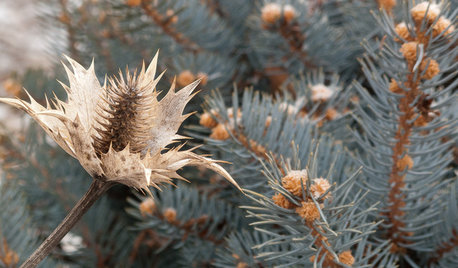
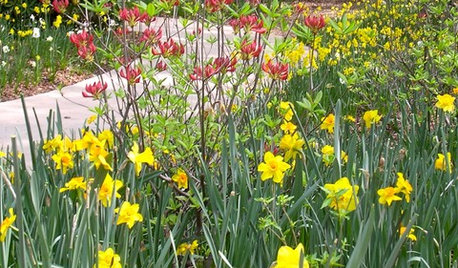
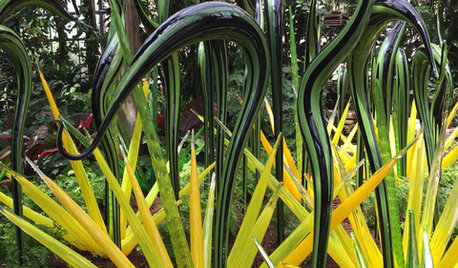
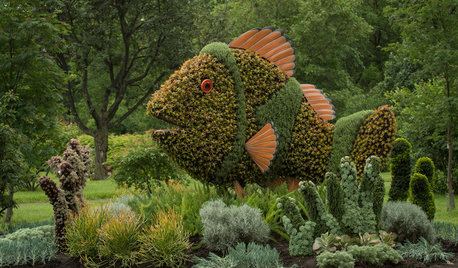
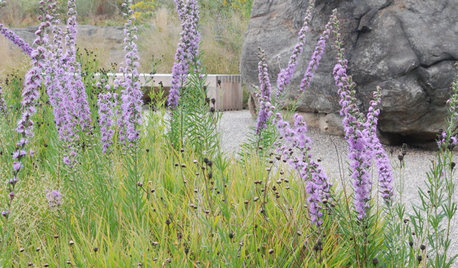

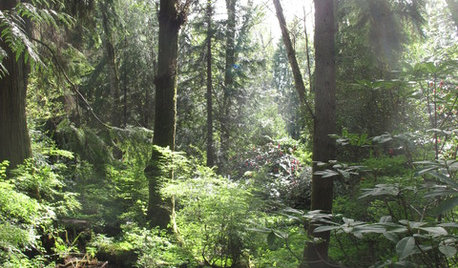

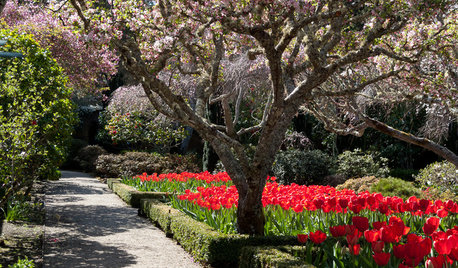
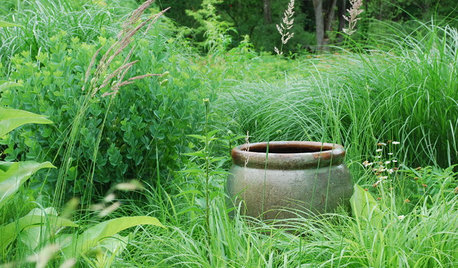








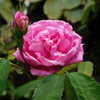


gnabonnandOriginal Author